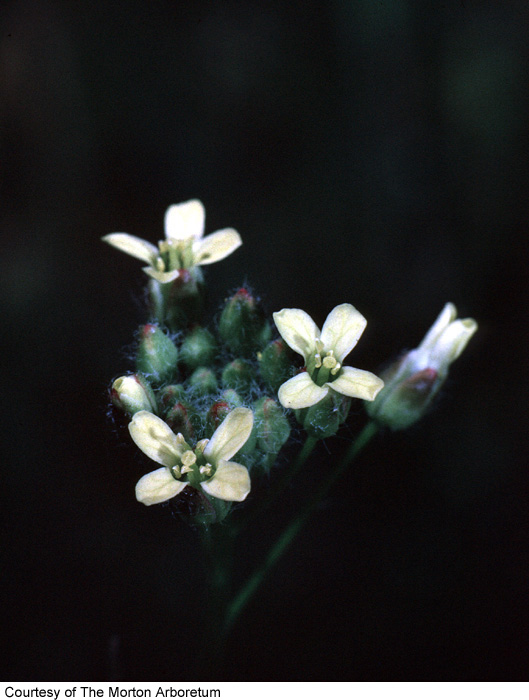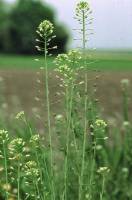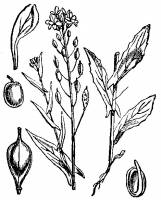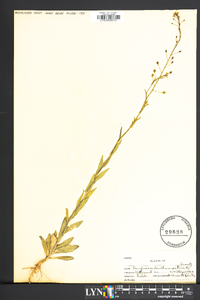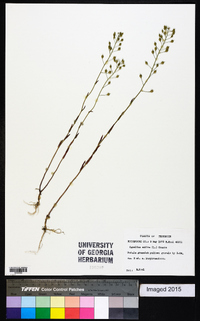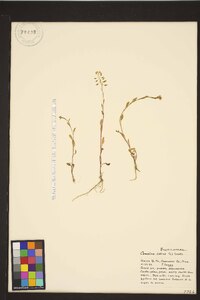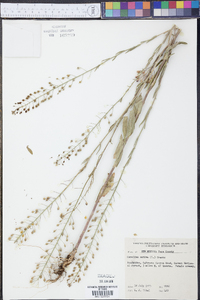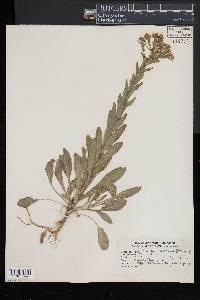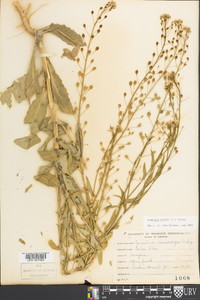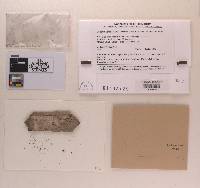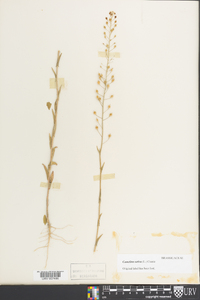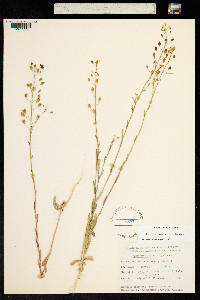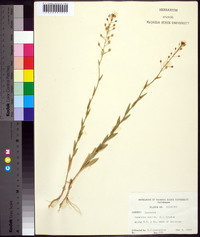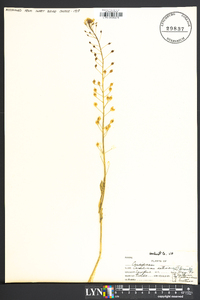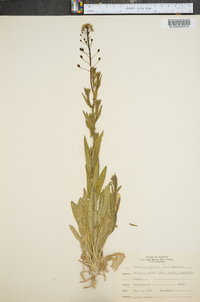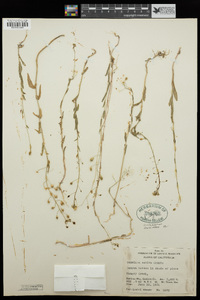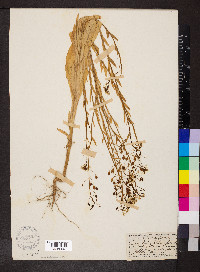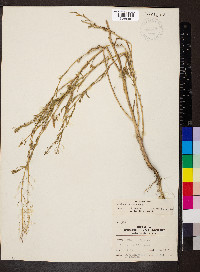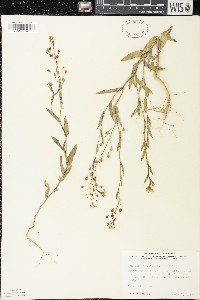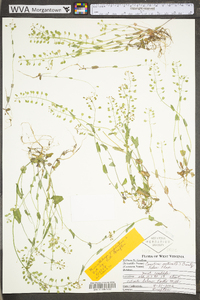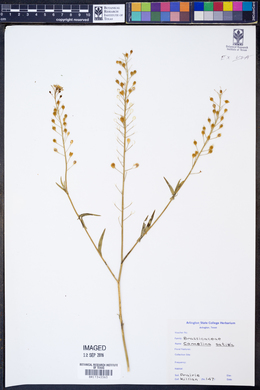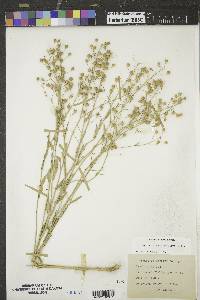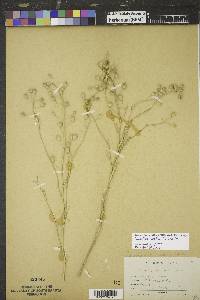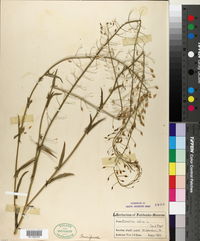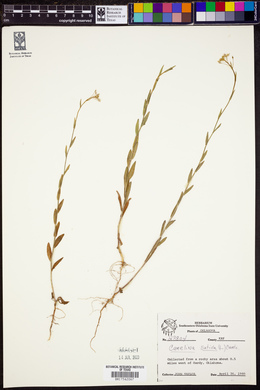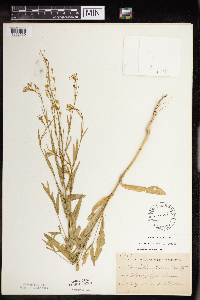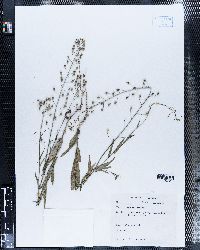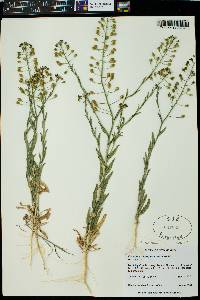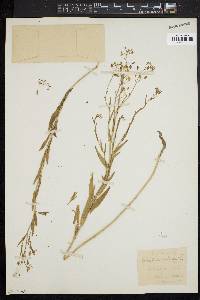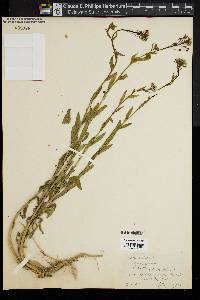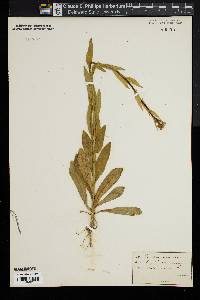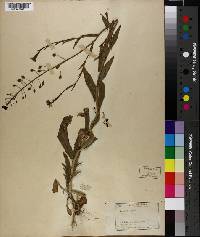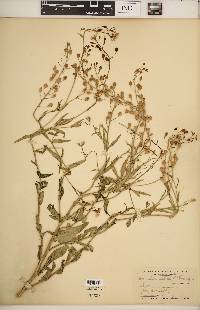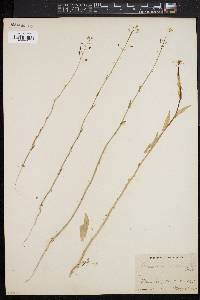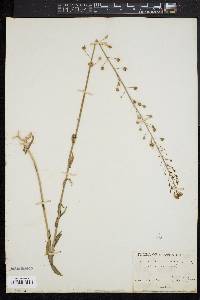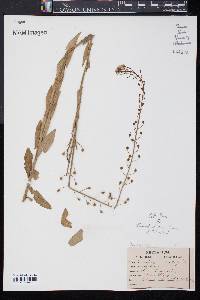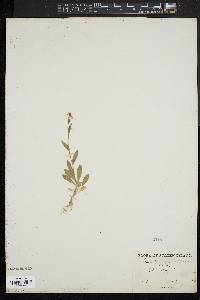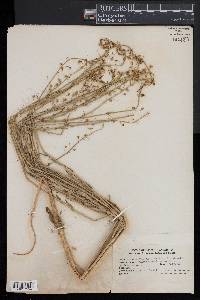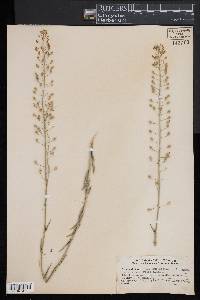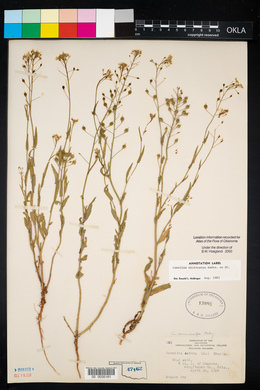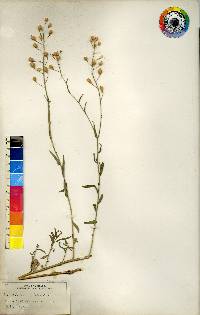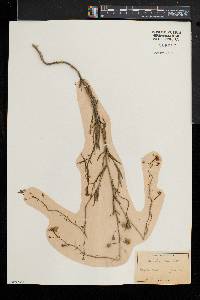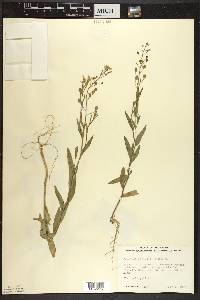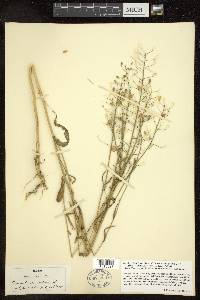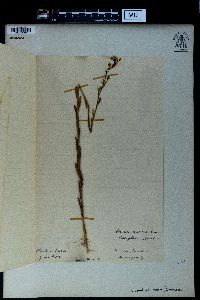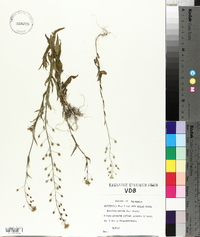Camelina sativa
|
|
|
|
Family: Brassicaceae
Gold-of-Pleasure, more...false flax
|
Annuals or biennials. Stems unbranched or branched distally, (1.2-)3-10(-13) dm, glabrous or sparsely pubescent basally, trichomes branched, rarely mixed with fewer, simple ones. Basal leaves often withered by anthesis. Cauline leaves: blade lanceolate, narrowly oblong, or linear-lanceolate, (1-)2-7(-9) cm × 2-10(-15) mm, base sagittate or strongly auriculate, margins entire or, rarely, remotely denticulate, apex acute, surfaces glabrescent or sparsely pubescent, trichomes usually forked. Fruiting pedicels ascending, (8-)12-20(-27) mm. Flowers: sepals 2-3(-4) × 0.5-1 mm; petals yellow, (3.5-)4-6 × 1-1.5 mm; filaments 1.5-3 mm; anthers ca. 0.5 mm. Fruits pyriform or broadly obovoid, 7-9 (-13) × 4-5(-6) mm (distinctly longer than wide), apex often subtruncate; valves each with prominent midvein, margin narrowly winged; style 1.2-2.5 mm. Seeds dark brown, (1.5-)1.8-2.5 × 0.7-1 mm. 2n = 40. Flowering May-Jun. Farms, grassy areas, fields, waste places; 0-1500 m; introduced; Alta., B.C., Man., N.W.T., Nunavut, Ont., Que., Yukon; Colo., Conn., D.C., Ill., Ind., Iowa, Kans., Maine, Mass., Mich., Minn., Mo., Mont., Nebr., N.H., N.J., N.Mex., N.Y., N.Dak., Ohio, Oreg., Pa., S.C., S.Dak., Vt., Va., W.Va., Wyo.; Europe; Asia; introduced also in South America, Australia. R. L. McGregor (1985) indicated that Camelina sativa is no longer established in North America; we tend to agree because we have not seen any collections made within the past 40 years.
Annual herb to 1 m tall Stem: upright, sometimes sparsely hairy (with simple and star-shaped hairs). The simple hairs always shorter than the star-shaped ones. Flowers: in loosely branched clusters, pale yellow, small. Petals four. Stamens six. Fruit: a pod, on 1 - 2 cm long stalks, upright, 7.5 - 9 mm long, more than 5 mm wide, pear-shaped but slightly flattened, inconspicuously veined, with a beak. Seeds yellowish brown, 1 - 2 mm long, oblong, triangular in cross-section. Lower leaves: alternate, short-stalked, 5 - 6 cm long, 1.5 - 2 cm wide, oblong, sometimes sparsely hairy with simple and star-shaped hairs. Upper leaves: alternate, stalkless, clasping, smaller than lower leaves (progressively reducing in size), lance-shaped, base lobed (typically pointed), sometimes with a few small teeth along the margins near the tip, sometimes sparsely hairy with simple and star-shaped hairs. Similar species: The similar Camelina microcarpa bears smaller fruit. Flowering: mid-May to mid-July Habitat and ecology: Introduced from Europe. Very rare in the Chicago Region, but believed to have been more common at one time. This is a weed of disturbed areas, and would most likely be found where Camelina microcarpa grows. Occurence in the Chicago region: non-native Notes: This plant is best viewed when the sky is overcast, because the flowers close and shrivel on sunny, warm days. Etymology: Camelina comes from the Greek words camai, meaning dwarf, and linon, meaning flax (the term "dwarf" being used to mean "false"). Sativa means cultivated. Author: The Morton Arboretum Much like no. 1 [Camelina microcarpa Andrz.]; stem and lvs glabrous to sparsely pubescent, the simple hairs not projecting beyond the stellate ones; frs 7-9 mm, inconspicuously veiny, on pedicels 10-21 mm; seeds 1-2 mm; 2n=40. Native of the Old World, established as a casual weed in n. U.S. and adj. Can., less common with us than no. 1 [Camelina microcarpa Andrz.]. Gleason, Henry A. & Cronquist, Arthur J. 1991. Manual of vascular plants of northeastern United States and adjacent Canada. lxxv + 910 pp. ©The New York Botanical Garden. All rights reserved. Used by permission. |
|
|
|

